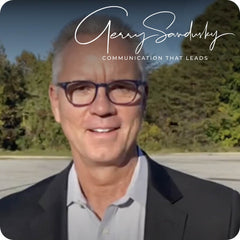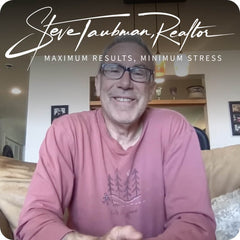As a business development professional, you understand the importance of making a strong first impression. And when it comes to email introductions, getting it right is crucial. That's why we've put together this comprehensive guide to help you master the art of introducing yourself in an email. From striking the right tone to highlighting your key achievements, we will provide you with actionable tips and real-life examples to help you make a lasting impact. Get ready to elevate your email game and leave a lasting impression on your recipients.
Why Email Introductions Matter
Email introductions matter in the world of business development for several reasons. First and foremost, they serve as the initial point of contact with potential clients, partners, or colleagues. A well-crafted email introduction can make a lasting impression and set the tone for future interactions.
Additionally, email introductions provide an opportunity to showcase your professionalism, expertise, and unique value proposition. By effectively introducing yourself, you can establish credibility and build trust with the recipient, increasing the likelihood of a positive response and further engagement.
Furthermore, email introductions play a crucial role in relationship building and opening doors to new opportunities. A thoughtful and personalized introduction can help you establish a connection with the recipient, demonstrating your genuine interest and willingness to collaborate. This can lead to fruitful partnerships, business growth, and expanded networks.
How To Introduce Yourself In an Email
When it comes to introducing yourself in an email, it's important to follow a step-by-step process to ensure clarity, professionalism, and effectiveness. Here's a detailed guide on how to introduce yourself in an email, incorporating the keywords you mentioned:
- Subject Line: Start by crafting a compelling subject line that grabs the recipient's attention and clearly indicates the purpose of your email. For example, "Introduction: [Your Name] - [Company Name]".
- Greeting: Begin your email with a formal greeting, addressing the recipient by their appropriate title and last name. For instance, "Dear Mr. Smith," or "Dear Dr. Johnson,".
- Self-Introduction: In the opening paragraph, briefly introduce yourself by stating your name and your current position or role within your company. For example, "My name is [Your Name], and I am the Business Development Manager at [Company Name]."
- Purpose: Clearly state the purpose of your email. Are you reaching out for a specific reason, such as requesting a meeting or seeking collaboration? Be concise and specific. For instance, "I am writing to request a meeting to discuss potential partnership opportunities between our companies."
- Message: In the body of the email, provide more details about yourself, your expertise, and your company. Highlight relevant experience, achievements, or projects that demonstrate your credibility and value. For example, "With over 10 years of experience in the industry, I have successfully led numerous business development initiatives that resulted in significant revenue growth for my previous clients."
- Personalization: If possible, personalize your email by mentioning something specific about the recipient or their company. This shows that you have done your research and are genuinely interested in connecting with them. For instance, "I recently came across your company's impressive market expansion efforts, and I believe there may be potential synergies between our organizations."
- Request: Clearly state any specific requests or actions you would like the recipient to take. Be polite and considerate in your tone. For example, "I would be grateful if we could schedule a meeting at your earliest convenience to explore potential collaboration opportunities."
- Formality: Maintain a formal tone throughout the email, using professional language and avoiding slang or casual expressions. This helps to establish a sense of professionalism and respect.
- Closing: Conclude your email with a polite closing, such as "Thank you for your time and consideration."
- Signature: Include a professional email signature that includes your full name, job title, contact information, and any relevant social media profiles or website links.
Remember to proofread your email for any errors or typos before hitting the send button. By following this step-by-step process and incorporating these keywords, you can effectively introduce yourself in an email and make a positive impression on your recipients.
How Do You Write an Introduction For an Email
Here are 3 different examples of email introductions:
Introduction for a Networking Opportunity
Subject Line: Introduction: [Your Name] - [Your Company]
Dear [Recipient's Name],
I hope this email finds you well. My name is [Your Name], and I am the [Your Position] at [Your Company]. I recently came across your profile on [Networking Platform] and was impressed by your expertise in [Specific Field]. I believe there may be potential synergies between our organizations and would love to explore possible collaboration opportunities.
I would be grateful if we could schedule a brief call or meeting to discuss how we can mutually benefit from a partnership. Please let me know your availability, and I will be happy to accommodate your schedule.
Thank you for your time and consideration. I look forward to the possibility of working together.
Best regards, [Your Name] [Your Position] [Your Company] [Contact Information / Signature]
Introduction for a Job Application
Subject Line: Job Application: [Your Name] - [Position Title]
Dear Hiring Manager,
I hope this email finds you well. My name is [Your Name], and I am writing to express my interest in the [Position Title] at [Company Name]. With [Number] years of experience in [Relevant Field], I am confident in my ability to contribute to the success of your team.
In my previous role at [Previous Company], I successfully [Highlight Key Achievement or Responsibility]. I am particularly drawn to [Company Name]'s innovative approach to [Specific Industry/Field] and would be thrilled to be part of your dynamic team.
I have attached my resume for your review. I would welcome the opportunity to discuss how my skills and qualifications align with the requirements of the position. Please let me know if there is a convenient time for a call or meeting.
Thank you for considering my application. I look forward to the possibility of joining [Company Name] and contributing to its continued success.
Sincerely, [Your Name] [Contact Information / Signature]
Introduction for a Cold Email Outreach
Subject Line: Introduction: [Your Name] - [Reason for Reaching Out]
Dear [Recipient's Name],
I hope this email finds you well. My name is [Your Name], and I am reaching out to you from [Your Company]. I recently came across your work in [Specific Field/Industry] and was impressed by your expertise and achievements.
At [Your Company], we specialize in [Briefly Describe Your Company's Services/Products]. I believe that our [Specific Service/Product] could be of great value to your organization, helping you [Benefit or Solve a Problem]. I would love to discuss how we can collaborate and support your goals.
If you are available, I would appreciate the opportunity to schedule a call or meeting at your convenience. Please let me know your availability, and I will be happy to accommodate your schedule.
Thank you for considering this opportunity. I look forward to the possibility of working together.
Best regards, [Your Name] [Your Position] [Your Company] [Contact Information Signature]
Remember to customize these examples to fit your specific situation, ensuring that the introduction is tailored to the recipient and the purpose of your email.
How To Introduce Yourself In an Email When Taking Over a Project
Here are 3 examples of how to introduce yourself in an email when taking over a project:
Introducing Yourself as the New Project Lead
Subject Line: Introduction: New Project Lead - [Project Name]
Dear Team,
I hope this email finds you well. My name is [Your Name], and I am excited to join the team as the new Project Lead for [Project Name]. I understand that I am taking over from [Previous Project Lead's Name], and I want to assure you that I am committed to continuing the progress made thus far.
I have [Number] years of experience in [Relevant Field], and I have successfully managed similar projects in the past. I am confident that, together, we can achieve our project goals and deliver a successful outcome.
In the coming days, I will be reviewing the project documentation, milestones, and timelines. I would appreciate the opportunity to meet with each of you individually to gain a deeper understanding of your roles and contributions to the project. Please let me know your availability, and I will schedule a meeting accordingly.
I look forward to working with all of you and leveraging our collective expertise to drive this project to success. If you have any immediate questions or concerns, please feel free to reach out to me.
Best regards, [Your Name] [Project Lead] [Contact Information / Signature]
Introducing Yourself as the New Project Manager
Subject Line: Introduction: New Project Manager - [Project Name]
Dear [Project Team],
I hope this email finds you well. My name is [Your Name], and I am thrilled to join the team as the new Project Manager for [Project Name]. I understand that I am stepping into this role following [Previous Project Manager's Name], and I am committed to maintaining the project's momentum.
With [Number] years of experience in project management, I have successfully led cross-functional teams and delivered complex projects on time and within budget. I am confident that my skills and expertise will contribute to the continued success of this project.
In the upcoming days, I will be reviewing the project plan, milestones, and deliverables. I would like to schedule a team meeting to introduce myself, discuss any immediate priorities, and address any questions or concerns you may have. Please let me know your availability, and I will coordinate a meeting that works for everyone.
I am excited to collaborate with each of you and leverage our collective strengths to achieve our project objectives. If you have any questions or need assistance, please do not hesitate to reach out to me.
Best regards, [Your Name] [Project Manager] [Contact Information / Signature]
Introducing Yourself as the New Project Team Member
Subject Line: Introduction: New Project Team Member - [Project Name]
Dear [Project Team],
I hope this email finds you well. My name is [Your Name], and I am delighted to join the team as a new member of the [Project Name] project. I am excited to contribute my skills and expertise to the project's success.
With [Number] years of experience in [Relevant Field], I have worked on similar projects and have a strong understanding of the challenges and opportunities we may encounter. I am confident that, together, we can achieve our project goals and deliver outstanding results.
I look forward to collaborating with each of you and learning from your expertise. I believe that open communication and teamwork are essential for project success, and I am committed to fostering a positive and productive working environment.
If you have any specific onboarding or project-related information that you think would be helpful for me to know, please feel free to share it with me. I am eager to get up to speed quickly and contribute effectively.
Thank you for the warm welcome, and I am excited to embark on this project journey with all of you.
Best regards, [Your Name] [Project Team Member] [Contact Information / Signature]
Remember to personalize these examples based on your specific project and team dynamics. Introducing yourself in a clear and friendly manner will help establish a positive working relationship with your colleagues and set the stage for a successful project collaboration.
What Is The Ideal Length For an Email Introduction?
The ideal length for an email introduction is concise and to the point. It should provide enough information to introduce yourself, state the purpose of your email, and capture the recipient's interest, while avoiding unnecessary details or overwhelming the reader. Aim for a length of around 3-5 sentences or 100-150 words. Remember, brevity is key in email introductions to respect the recipient's time and ensure that your message is clear and easily digestible.
Is It Important To Include a Signature At The End Of an Email Introduction?
Yes, it is important to include a signature at the end of an email introduction. A signature provides essential contact information and adds a professional touch to your email. It typically includes your full name, job title, company name, and relevant contact details such as phone number and email address. Including a signature makes it easier for the recipient to reach out to you and ensures that they have all the necessary information to respond or follow up. Additionally, a well-designed signature can enhance your credibility and leave a positive impression on the recipient.
Dos and Don'ts of Email Introductions
Dos of Email Introductions
- Do Tailor Your Introduction to the Recipient: Take the time to research and understand the recipient's background, interests, and needs. Customize your email introduction to show that you have done your homework and that you value their time and attention.
- Do Keep it Concise and Clear: Be mindful of the recipient's time and keep your introduction concise and to the point. Communicate who you are, your purpose for reaching out, and any relevant information without overwhelming the recipient with unnecessary details.
- Do Highlight Relevant Experience and Achievements: Showcase your expertise and accomplishments that are relevant to the recipient's interests or needs. This helps establish your credibility and demonstrates the value you can bring to the table.
Don'ts of Email Introductions
- Don't Overload with Unnecessary Information: Avoid overwhelming the recipient with an excessively long or detailed introduction. Stick to the essential information and save the additional details for further conversations or follow-up emails.
- Don't Use Generic Templates or Language: Avoid using generic email templates or language that lacks personalization. Tailor your introduction to the recipient and make it genuine and authentic.
- Don't Forget to Proofread and Polish: Always proofread your email before sending it. Check for any grammatical errors, typos, or formatting issues. A well-polished email demonstrates your attention to detail and professionalism.
By following these dos and don'ts, you can ensure that your email introductions are effective, professional, and engaging. Remember, a well-crafted introduction can set the stage for successful business relationships and opportunities.
Conclusion
In conclusion, mastering the art of introducing yourself in an email is a valuable skill for business development professionals. By following the expert tips provided in this article, you can make a strong first impression, build relationships, and open doors to new opportunities. Remember to tailor your introduction to the recipient, keep it concise and clear, and highlight your relevant experience and achievements. Additionally, be mindful of the dos and don'ts of email introductions to ensure professionalism and effectiveness. With these strategies in mind, you can confidently introduce yourself in an email and elevate your business development skills to achieve success in your professional endeavors.
Final Thoughts
Make a statement with Artlogo's exclusive signature designs. Our team of skilled professionals is dedicated to crafting personalized handwritten signatures, logos, and QR code business cards that exude confidence and professionalism. With our meticulous attention to detail and commitment to excellence, Artlogo guarantees that your signature will make a lasting impression and set you apart from the competition.
Sources
























Share to: